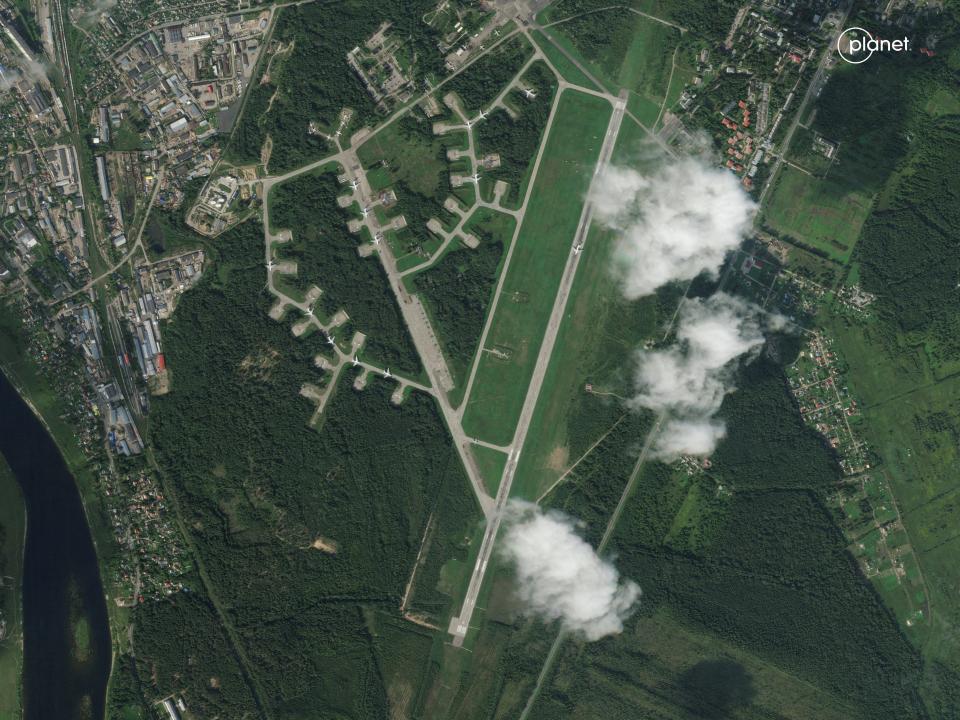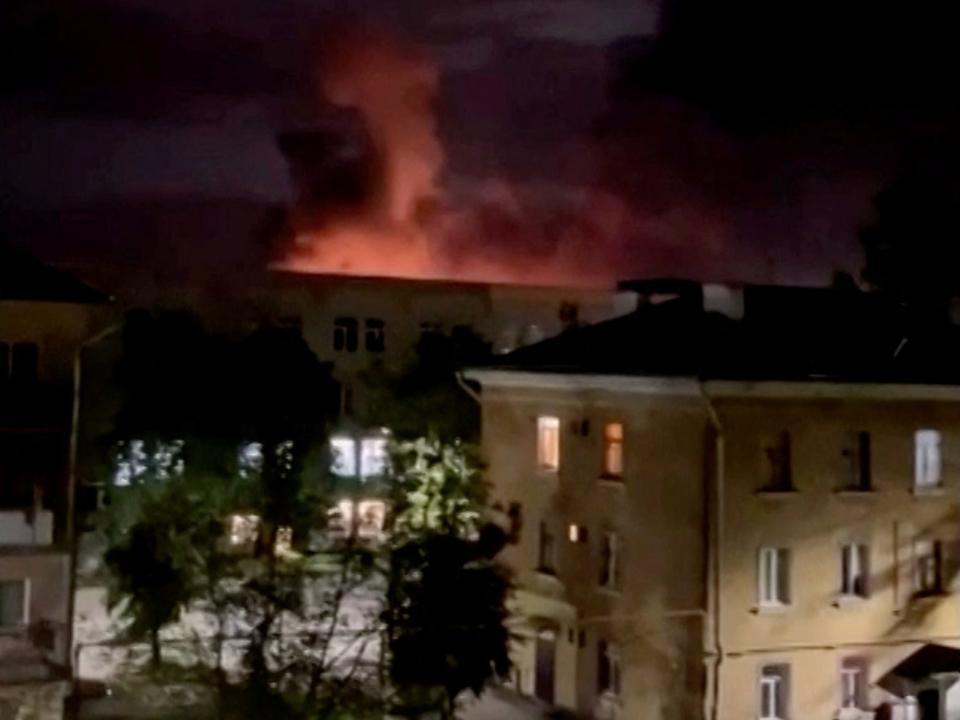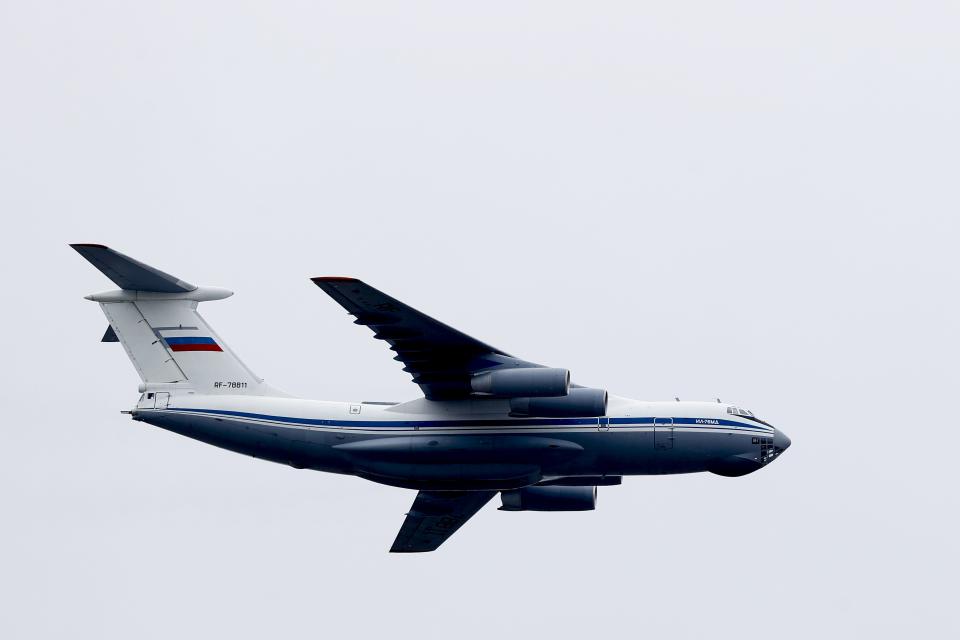Russia is getting hundreds of volunteers to protect its vulnerable planes from attacks, likely because it lacks enough trained security teams, intel says
A recent drone attack on a Russian airbase left several military aircraft damaged and destroyed.
In response to strikes, Russia got hundreds of civilian volunteers to patrol the Kresty base.
But the use of volunteers shows Moscow lacks enough trained security personnel, Western intel says.
Looking for ways to defend an airbase where several military transport aircraft were damaged or destroyed in a drone attack last month, Russia is turning to civilian volunteers to patrol the area, likely because it lacks enough trained security personnel to do the job, according to Western intelligence.
In late August, several drones struck the Kresty base, which is located in the northeastern Pskov region not far from Russia's border with Estonia but more than 400 miles from its border with Ukraine.
The nighttime attack destroyed two Ilyushin Il-76s — Soviet-era airlift planes that can move cargo and personnel — and damaged two more. Kyiv's military intelligence chief, Maj. Gen. Kyrylo Budanov, revealed several days later that the drones were launched from within Russia's own territory, although it remains unclear if it was carried out by the Ukrainian military or Russian partisans.
The Kresty attack proved to be one of the more significant on Russia's internationally recognized territory since its forces invaded Ukraine in late February 2022, and the attack came amid a string of assaults specifically targeting Russian airfields. These incidents have exposed serious shortcomings in Moscow's force protection and air-defense capabilities, prompting it to seek alternative solutions to mitigate the problem — one of which is a newly constructed volunteer force.
Britain's defense ministry wrote in a Sunday intelligence update that Pskov's governor recently organized volunteer security patrols to prevent additional drone attacks on the Kresty base. As many as 800 citizens have signed up to join the patrols, which will include groups of 50 individuals divided into municipalities to patrol airports, airbases, and other infrastructure.

"The creation of these volunteer security patrols will likely act as a deterrence and provide a level of defence against quadcopter UAVs being operated from the immediate vicinity of the air base," Britain's defense ministry said.
It's unclear if the patrols will be armed with any specific weapons or if they'll be acting purely in a surveillance role.
"Historically it has proven difficult to destroy UAVs using small-arms fire, so Russian forces will still require air-defence systems, with a surveillance capability and both kinetic and electronic means of interception, to destroy attacking UAVs," Britain's defense ministry said, noting that "the use of volunteers highly likely indicates a shortage of trained security personnel within Russia" — the same issue that has plagued Moscow's military throughout its war in Ukraine.
The new measures to protect its bases underscore major deficiencies in Russia's domestic security and air-defense network. Moscow has prided itself for having layered and sophisticated defenses, and while these may be more capable when it comes to identifying bigger targets like missiles and aircraft, smaller drones have managed to find gaps in the network and overcome them.

August alone saw over two dozen drone attacks on Russian territory. Britain's defense ministry said shortly after the Kresty incident that because these weapons have managed to reach their intended targets, it shows that Russia's air-defense network is likely having a hard time detecting and destroying the threats.
In response, it said, Russia is likely "rethinking" its air-defense posture on its own territory and could be forced to consider adding more capabilities to defend its vulnerable bases. One remedy to these deficiencies has been the recent construction of towers with guns on top — copying a World War II-era system.
Another action Russia has taken to seemingly defend vulnerable aircraft from potential aerial threats is placing car tires on the fuselages and wings of bombers. It's an unusual form of protection, although it's not the first time Russia has built a makeshift defense to defend against strategic targets. Moscow purposefully sank ships near a key bridge in occupied Crimea to try and protect it from potential Ukrainian sea drone attacks.

As Ukraine continues to ramp up its drone attacks on Russian territory, Moscow has been working to expand its arsenal of drones. It recently begun producing its own version of the Iranian-made Shahed-136, which are explosive loitering munitions that the Kremlin has relied on for a year to terrorize Ukrainian cities and damage civilian infrastructure.
As it increases the number of drones it possesses, Russia is expected to stage larger attacks on military and civilian targets across Ukraine in the near future, experts told Insider. This could pose a major headache for Ukraine's own air-defense network, although US officials have asserted that the Biden administration will continue to prioritize additional capabilities to help meet the threat. Other NATO partners have indicated the same.
Indeed, last week alone the Pentagon announced two separate security assistance packages for Ukraine that include equipment to support and sustain Kyiv's air-defense capabilities.
Read the original article on Business Insider

